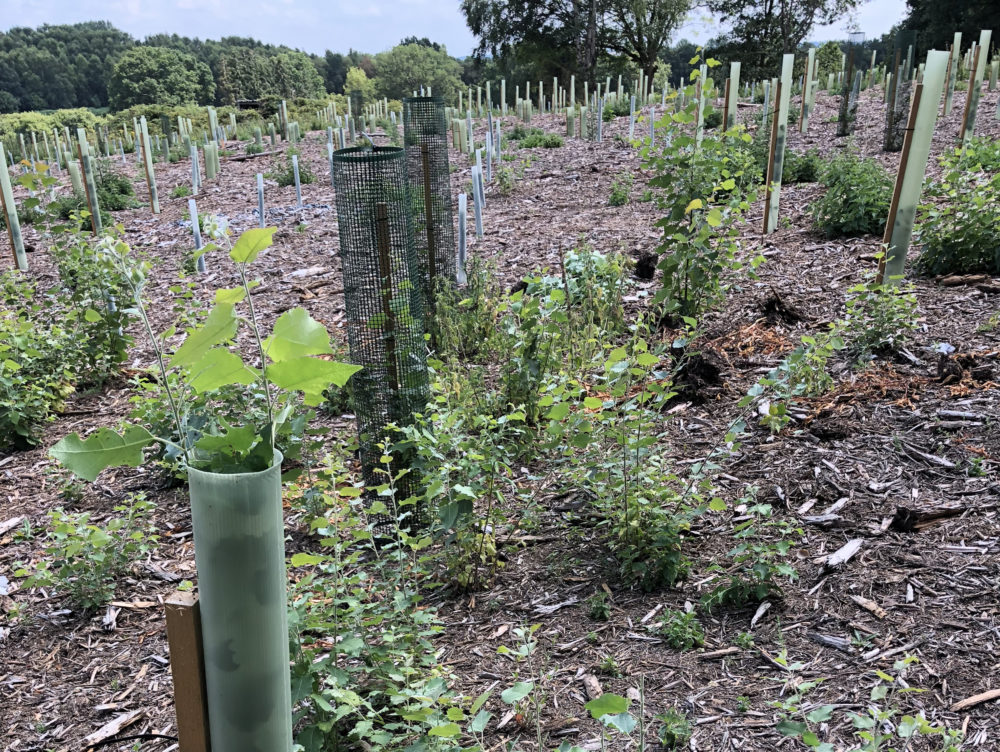Sticking with the theme of weather (I am British don’t you know) I guess I should comment on what a set of extremes we’ve been experiencing. I feel like I can finally breathe again thanks to the downpours of the last few days and I’m sure the trees are just as grateful for the respite.
Some trees from last winter’s planting are really struggling with the lack of moisture, particularly worst off are those on sandy and elevated sites. Whereas others that we mulched (incorporating all the woody debris from left over brash back into the soil) prior to planting are doing much better. This is because the biomass in the soil retains moisture like a sponge much more readily than sand which simply allows it to flow through like a sieve.
Unfortunately, that makes it better for a whole host of vegetation not just our trees. This has led to an issue with the very invasive Himalayan Balsam instead. However, pulling it out by hand before it seeds, although labour intensive, should have a very positive effect and knock it back for years to come. Indeed, thanks to the heat, when I went back to the site after just a day of such effort on one of our sites, the leaves more closely resembled over cooked puff pastry than the lush Himalayan forest that was there before.
The sun has had its benefits mind you – put an arm down the tree tubes and you can easily feel the heat and humidity that’s been generated by the greenhouse effect of the sunlight coming though the tube. This creates a microclimate inside the tube not dissimilar to that of a rainforest, that’s ideal for rapid tree growth.
I enjoy the sun but I’m honestly already looking forward to winter. I dread to think what years to come will hold if heatwaves like this are to become more the norm. Perhaps we should invest now in a few watering bowsers before the prices go up?
I’ve also recently had the pleasure of lending a hand to the harvesting side of our business. Through this I’ve been supervising operations such as harvesting Ash, which most people in the South of England will know has been heavily hit by Chalara (Hymenoscyphus fraxinea).
This can present significant dangers when harvesting due to the large quantities of deadwood in the crown and altered timber properties meaning the trees can act even more unpredictably than usual. Extra safety measures are certainly required to deal with the diseased Ash that will have a significant impact on the industry across the country. Tilhill Forestry, with our expertise and scale, are in a very good position to help clients and other landowners address the issue.
On the harvesting side I’ve also managed reinstatement work that goes on after machines have left the woodland. Large machines often do leave some ruts in soft areas and can also damage forest roads. Reinstatement should include laying of new road material if necessary to damaged or sunken sections of road and also where appropriate levelling of ruts on softer ground.
Alex MacKinnon
Forest Manager
Southern England



